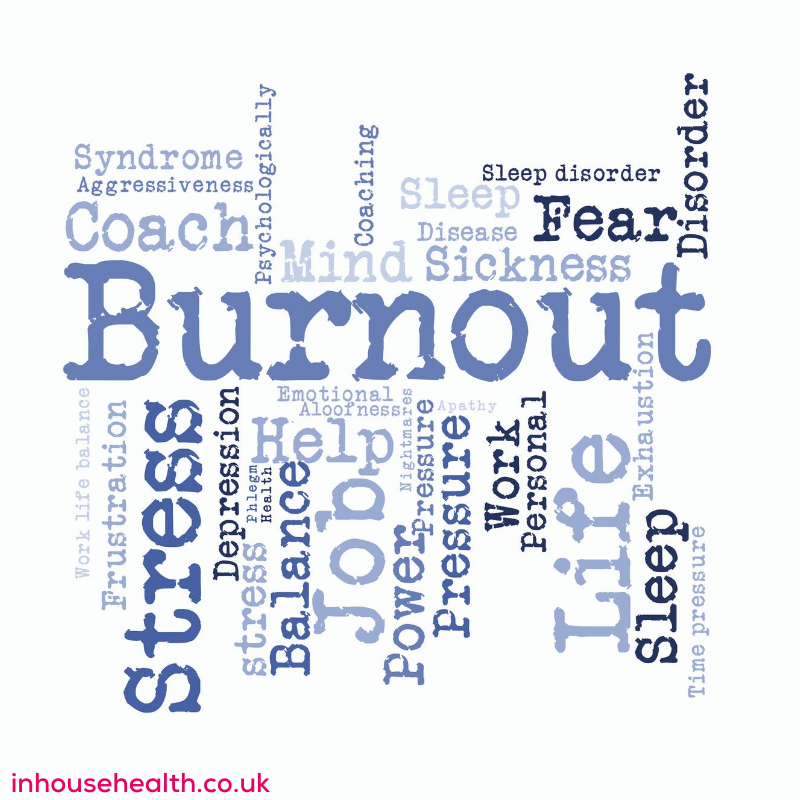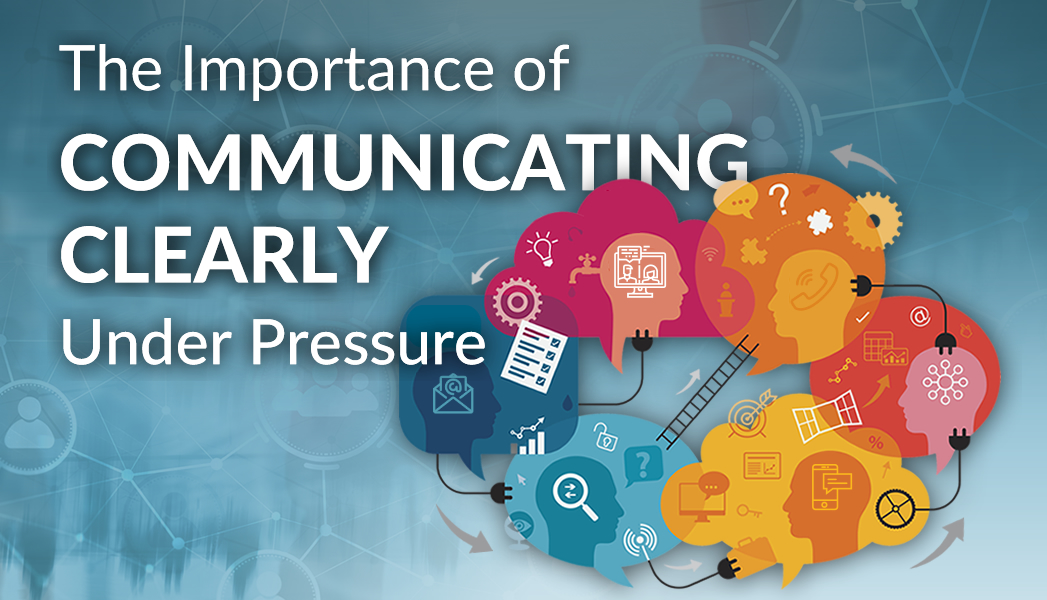
April is Stress Awareness Month. Many organisations will observe this event and encourage good mental health and healthy behaviours amongst their employees by educating and raising awareness. Ironically, by delivering their message through workplace technology that has infiltrated our lives and been an underlying part of the work-related stress problem for so long.
Advancement in technology has provided the flexibility for employees to work from home. It’s also provided agility and some stability for businesses to continue operating in this weird world we find ourselves in. The capability to instantly reply to emails and messages and hold numerous video calls that immediately connect us with colleagues and clients gives the impression of efficiency. It may even appear to boost productivity.
Of course, employees feel pressure to perform and excel, this has always been the case.
However, the digital tech sector also generates additional pressures for employees, such as hitting crucial and tight deadlines, meeting high expectations to execute and deliver projects and keeping up to date with advancements in new technology, to name but a few.
But this comes with a dark side. The ‘always-on’ mindset and culture. A misuse of what’s perceived as the future of work, and with that the damage to our health and wellbeing. That boost in productivity we see in the short term can quickly lead to increased work-related stress and eventually employee burnout.
 The tech sector is no stranger to burnout, and many reports back this up. The British Interactive Media Association (BIMA) 2019 Tech Inclusion and Diversity Report highlights some significant health concerns:
The tech sector is no stranger to burnout, and many reports back this up. The British Interactive Media Association (BIMA) 2019 Tech Inclusion and Diversity Report highlights some significant health concerns:
- 66% of respondents reported feeling regularly stressed by their work, with 13% feeling constantly stressed.
- More than 50% of respondents say they SOMETIMES or CONSTANTLY experience physical symptoms of stress, including headaches, sleeplessness, fatigue, panic attacks and stomach problems.
AON’s Benefit and Trends Survey highlighted that in 2018, 78% of businesses in the digital tech sector reported an increase in employee stress and mental health-related illness.
It’s not just people that these statistics impact, the cost is huge and is still rising for organisations. The British Association for Counselling and Psychotherapy calculated that stress costs UK businesses at least £1000 per employee, per year in sick pay and associated costs. Deloitte estimated this figure to be as high as £2500 in some sectors.
And in 2019, Asana reported that 81% of UK digital tech workers surveyed said they felt burned out at least once a month or more …. quite shocking really!
The digital tech sector has continued to grow during the recent pandemic, and this has been a double-edged sword for employees. Recently, tech recruiter, Harvey Nash conducted a survey that found 36% of tech professionals have seen their mental health deteriorate during the crisis.
So, what exactly is burnout and what can we do to prevent it?
Burnout is classed as a syndrome that results from workplace stress that has not been successfully managed. Not identified as a medical condition, the World Health Organisation suggest that the best way to address burnout, “is to focus on fixing the workplace rather than focusing on fixing the worker“.
Other research supports this by suggesting that burnout is related to stressors within the environment rather than related to weakness on the part of susceptible individuals. You’d like to think you’d realise if you or an employee were in the throes or heading towards an episode of burnout, yet we often make excuses or put problems down to some other cause.
Here are five signs that you or an employee may be suffering from burnout:
- You may feel exhausted, with no energy to do anything. You may also experience disturbed sleep, or lethargy and develop some cold or flu-like symptoms (not to be confused with covid).
- You may have trouble concentrating, and feel as if your mind is zoning out, going into a daze, like brain fog. You may notice reduced performance and productivity.
- You may feel irritated and frustrated, and become self-critical. As well as detaching from the things you love.
- Public places, such as restaurants and shops may begin to feel overwhelming – the lights are too bright and there is too much noise.
- You may suffer from headaches, changes in eating habits, muscle tension, high blood pressure, aches and pains and skin complaints.
Not very nice for anyone to experience. 
In the tech world, burnout is a difficult subject to address. It may require huge cultural shifts and take lots of time and effort, but we have to start somewhere.
According to Psychologist Christine Maslach, there are 6 areas at work that when unbalanced can lead to burnout. Perhaps we should start with these?
Workload
Deadlines need to be realistic and consider your business resources (people) available to deliver projects on time. Constantly piling pressure on employees will lead to burnout and add more pressure on other team members and so the cycle continues.
Something as simple as reminding employees that it’s ok for them to take time off work for holidays and for sickness can reduce pressure. In smaller teams, employees often feel the burden of passing work on to others in times of their absence. Increasing worry and stress levels.
If you’re seeing individuals continually working long after their core hours, check in with them to see if they’re ok. This could be a sign they’re not coping with their current workload.
Lack of Reward
This doesn’t necessarily mean you have to spend money. Reward can be gained through purpose and giving back. Getting involved with educational programmes or charity work is a great way to increase job satisfaction for your employees.
If you want to add benefits, make sure employees know what’s available and how to access them. You’d be surprised how many employees aren’t aware of some of the perks provided by their organisation!
Community
Does everyone feel part of the team and that they belong? Do you look out for each other and promote good health and wellbeing habits, starting with your own? Good physical and mental health results in increased employee engagement, productivity, and bottom-line profits.
Be mindful. Learn to recognise the signs of stress and overwhelm. Don’t just keep office chat about work, open communication channels so people feel comfortable in not just asking for help but also in supporting others. This can really boost morale and bond your team together.
Perceived Lack of Control
Does everyone know exactly what is expected of them? What their role is and what responsibilities are involved? Have employees been provided with the appropriate level of training to carry out their job and are they supported by their line manager who has also had suitable training?
All these issues add to employees’ stress levels. Well trained and informed employees don’t need their hands held or to be micromanaged. Trust them and watch them shine.
Fairness
Are you a passion killer? How passionate are you about X? Do you ask this when you interview future employees? A big bugbear of mine, can we please stop asking people how passionate they are about their job?
The idea that if you don’t work 20 hours a day and drop work to spend time with your family, means you don’t care about or aren’t committed to your job, is just ridiculous! This mindset leads to employee burnout and shocking retention rates. Where does it even come from and how can we change it? Let’s be fair to employees.
Remember to show your gratitude and appreciation. Saying thank you and giving credit where it’s due is one of the easiest ways to increase positivity and happiness amongst your teams. It’s a quick win and it’s free!
Values
You may want to take this time to review your current policies and procedures. Do they match your company values and the culture you are trying to create? If they don’t align with your employees or your employees don’t align with them, they won’t hang around for long.
Tech companies with the best record of ethnic and racial diversity (and overall good culture) earn more than the average company. In fact, 35% more according to the BIMA report mentioned earlier.
Introducing a workplace health and wellbeing programme can be the 1st step in highlighting not just current issues in your workplace but a way to identify future risks too.
Taking action and showing employees that you genuinely care about them whilst involving them along the way, will not only boost your reputation and credibility as an employer but will attract people that want your company to succeed too.

Give employees a sense of purpose, a feeling of belonging, and a management style that permits autonomy.
We’ve got enough to worry about when it comes to our health and wellbeing, let’s not add work-related stress and burnout to the list. Create positive health and wellbeing in your workplace, including remotely!
Even making small changes can reduce the risks and likeliness of burnout occurring in yourself and your teams. Then you can get back to doing what you’re good at…playing with computers all day, right?
Are you fed up with investing in employee wellbeing that doesn’t provide any long-term results? Are you unsure of what areas of your business need to be reviewed to build a framework for improved wellbeing and culture in your teams? Is this the time for you to take a strategic approach to employee wellbeing so that you can hit the ground running for your best year EVER? Get in touch with us at In-House Health today!









